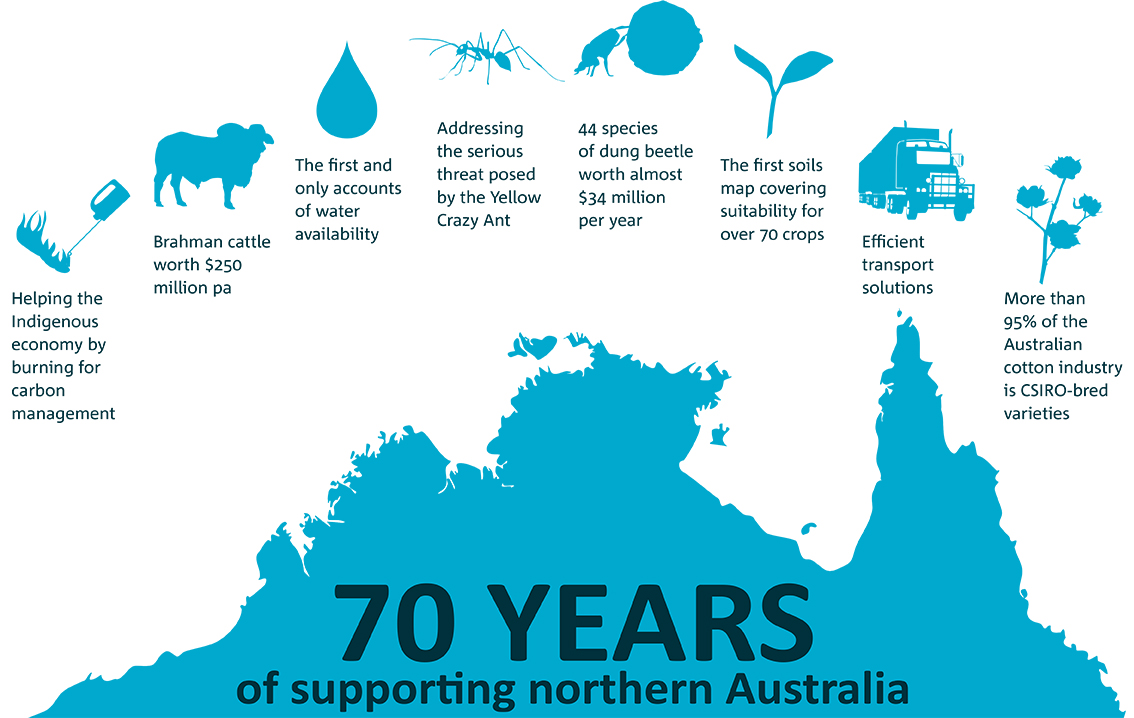
CSIRO first arrived in the north in the 1930s as the then CSIR, with staff primarily engaged in pastoral research based in Queensland.
Links to northern development began in earnest post World War II with the transfer of Katherine Research Station to CSIR from the Department of Army.
The first systematic land surveys of the north were commenced by CSIR in 1946 at the request of the 'Northern Australian Development Committee', comprising the Commonwealth Government and the governments of Queensland and Western Australia.
CSIRO has maintained a presence in the region ever since.
A graphic of the outline of northern Australia with large text "70 years of supporting northern Australia". It displays some of CSIRO's achievements in northern Australia in the last 70 years including: Helping the Indigenous economy by burning for carbon management Brahman cattle worth $250 million per annum The first and only accounts of water availability Addressing the serious threat posed by the Yellow Crazy Ant 44 species of dung beetle worth almost $34 million per year The first soils map covering suitability for over 70 crops Efficient transport solutions More than 95% of the Australian cotton industry is CSIRO-bred varieties
CSIRO first arrived in the north in the 1930s as the then CSIR, with staff primarily engaged in pastoral research based in Queensland.
Links to northern development began in earnest post World War II with the transfer of Katherine Research Station to CSIR from the Department of Army.
The first systematic land surveys of the north were commenced by CSIR in 1946 at the request of the 'Northern Australian Development Committee', comprising the Commonwealth Government and the governments of Queensland and Western Australia.
CSIRO has maintained a presence in the region ever since.
